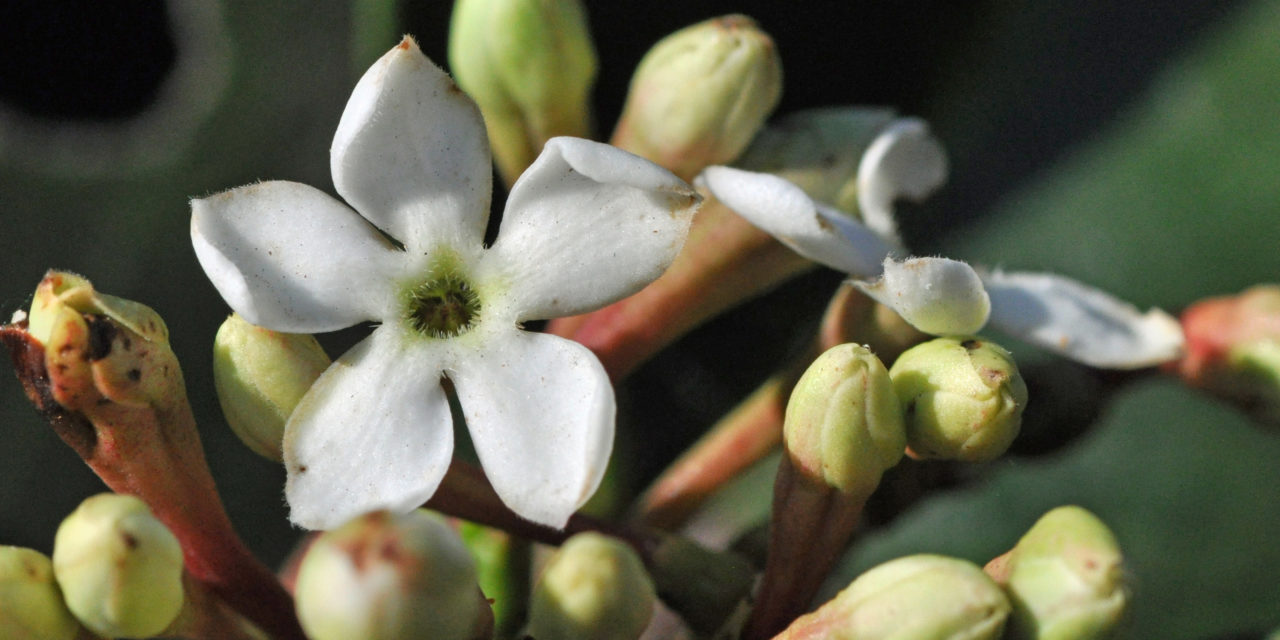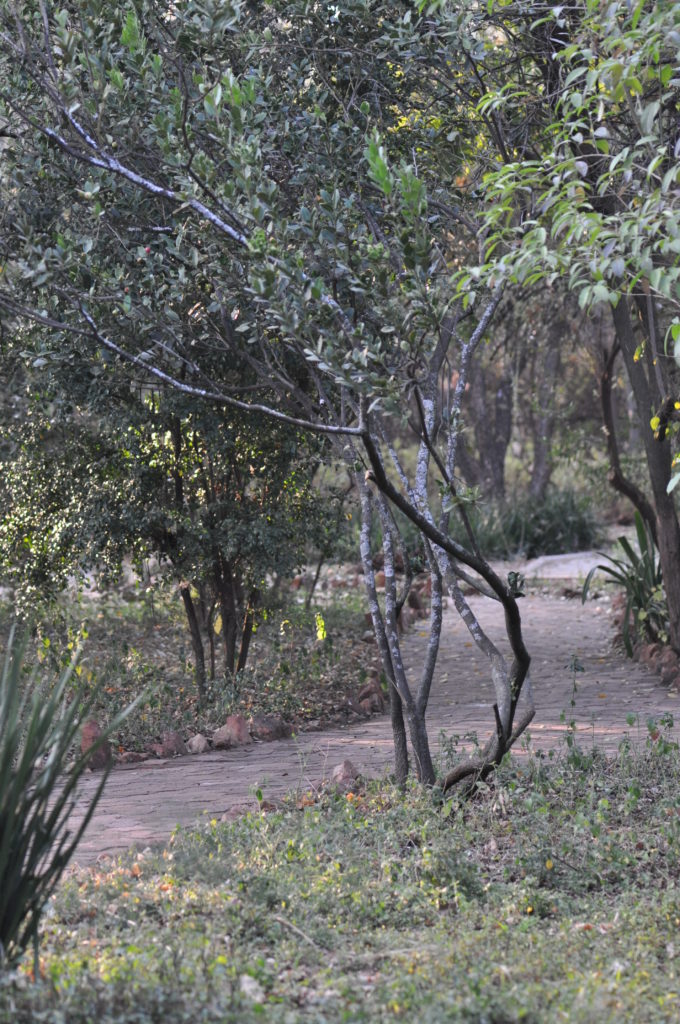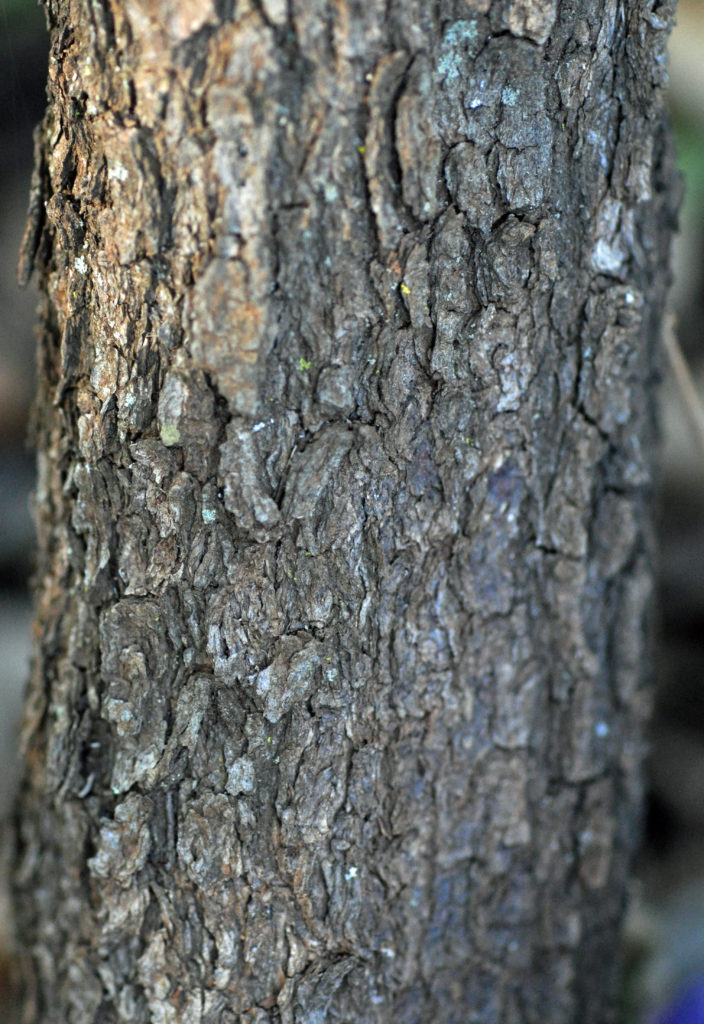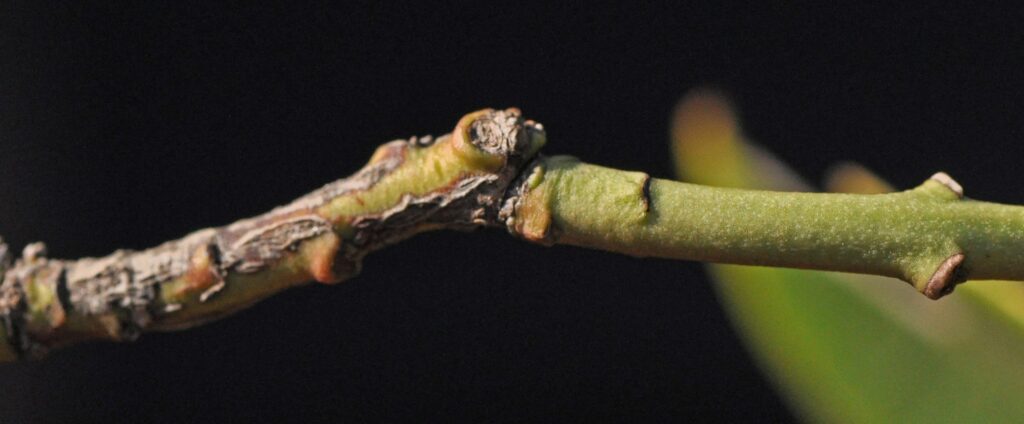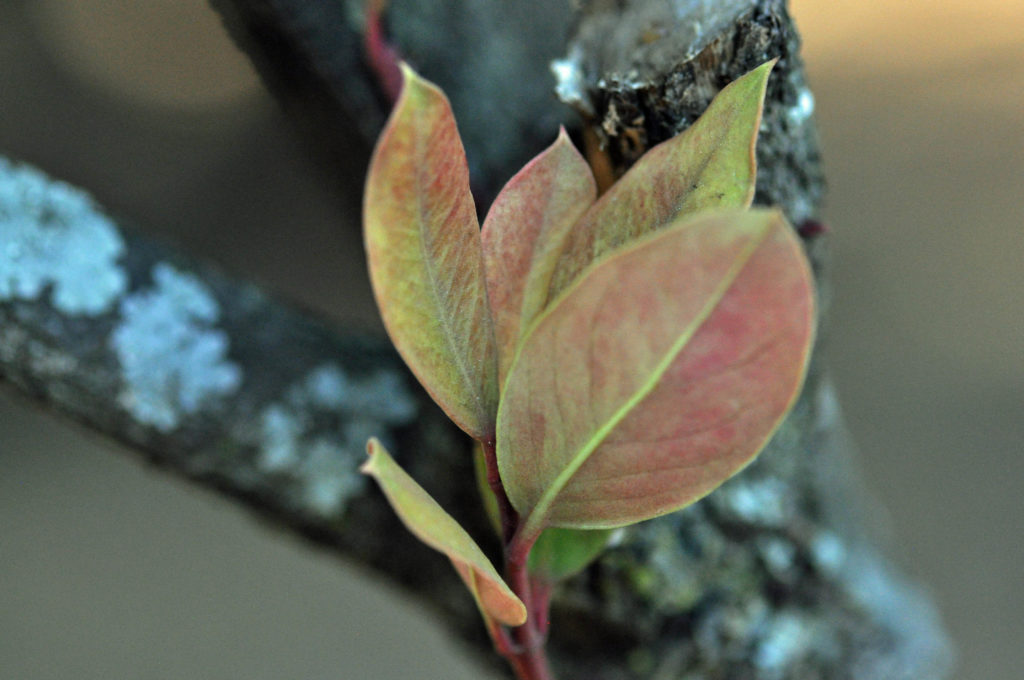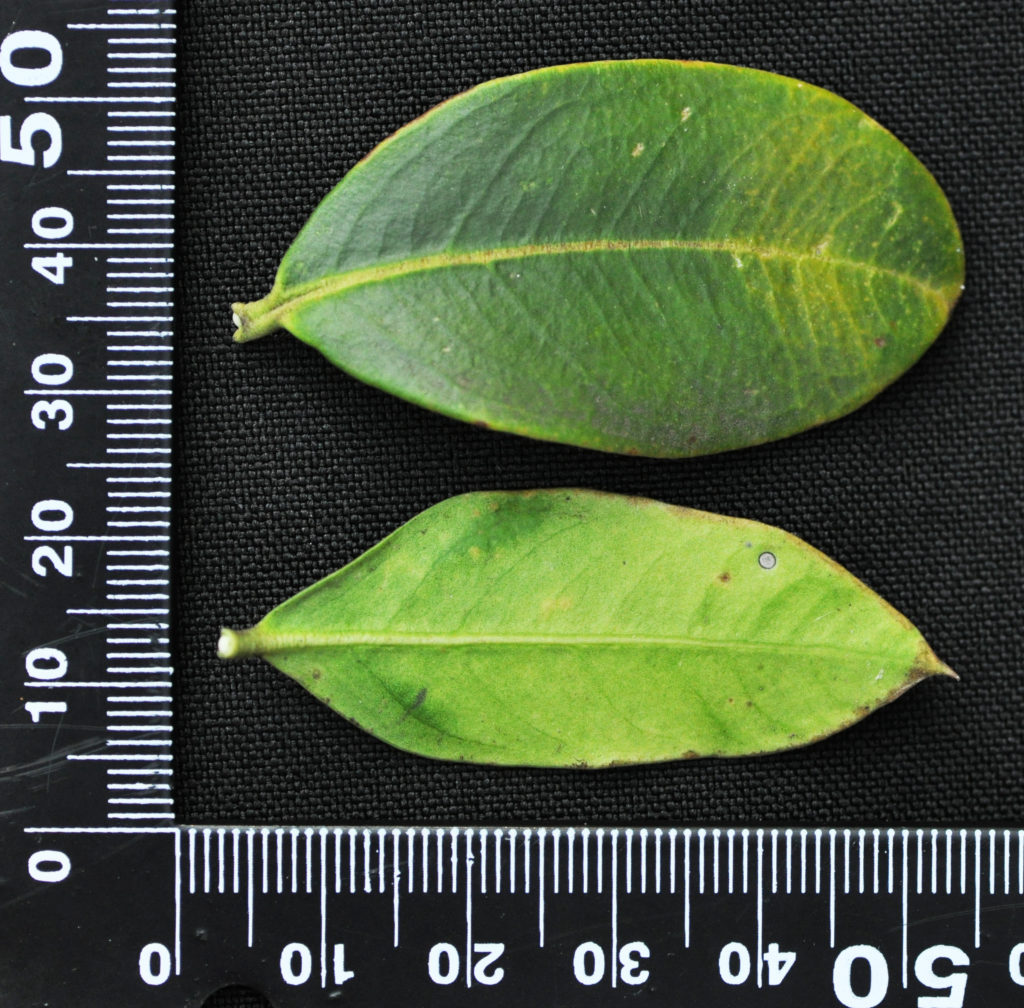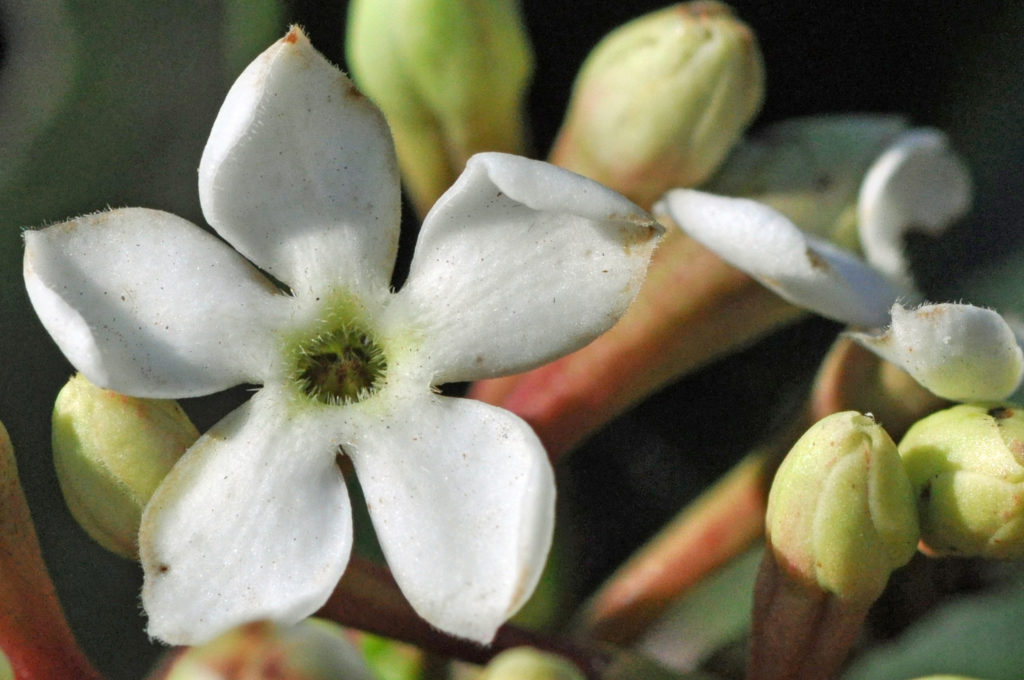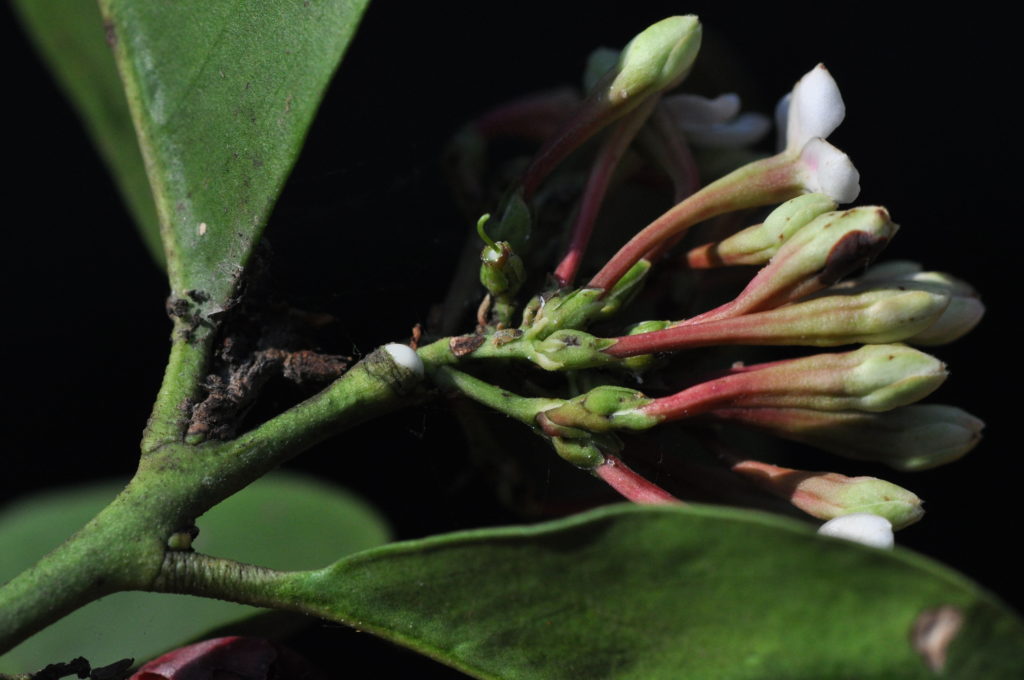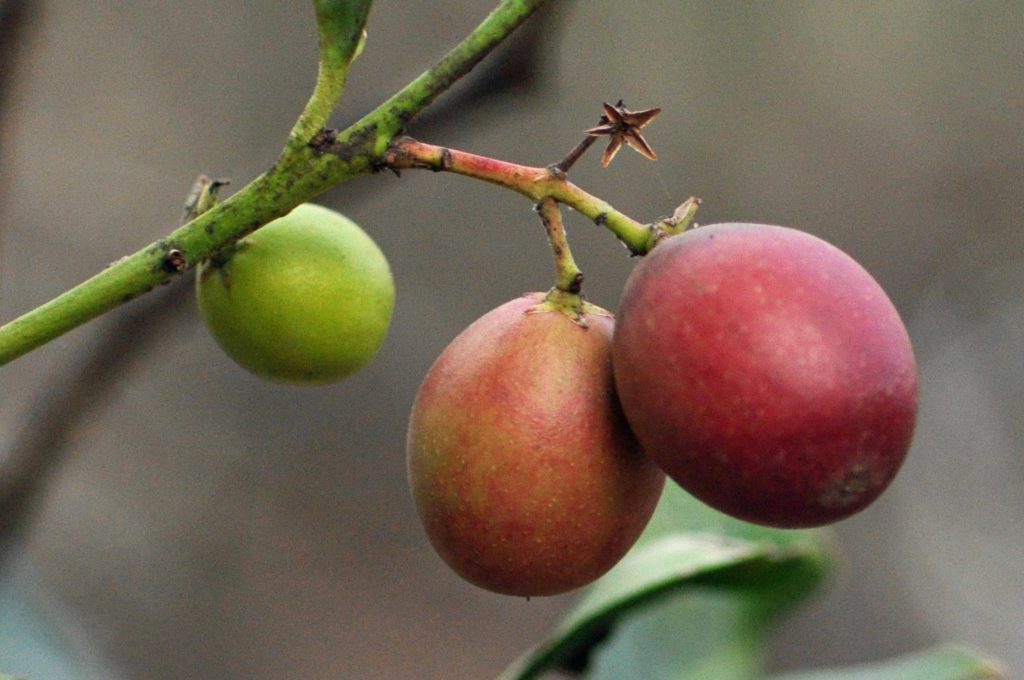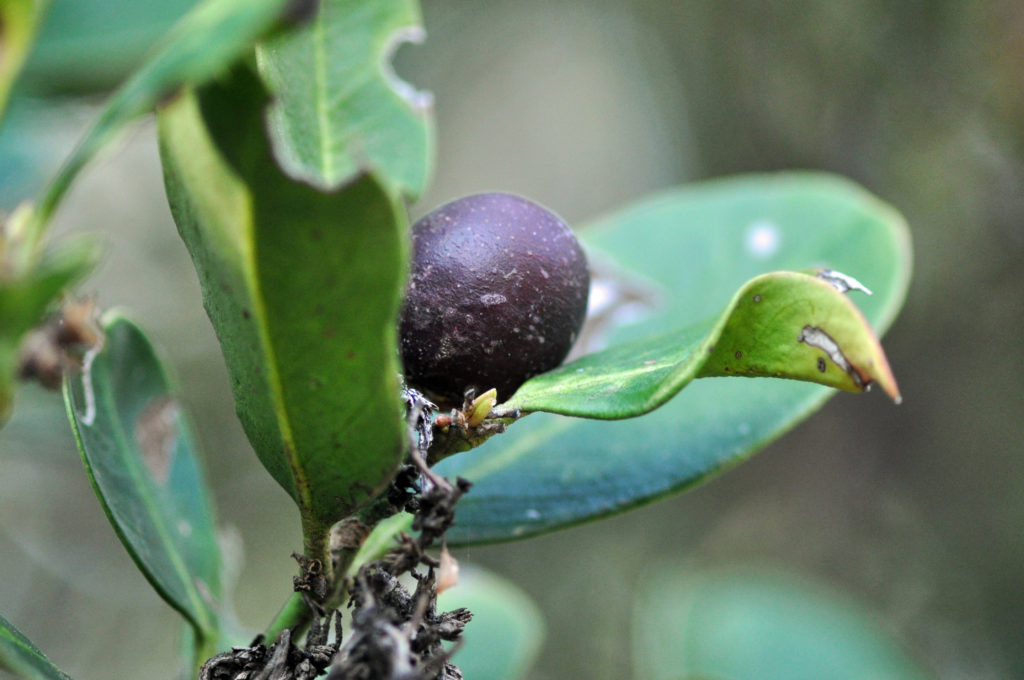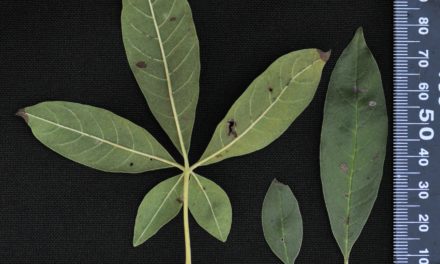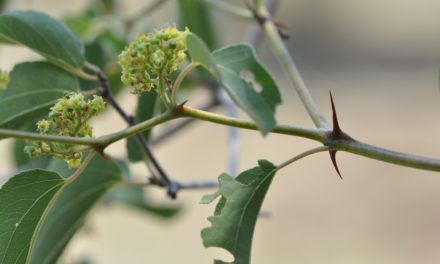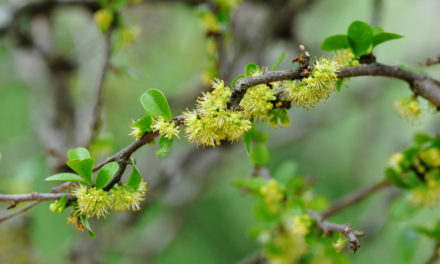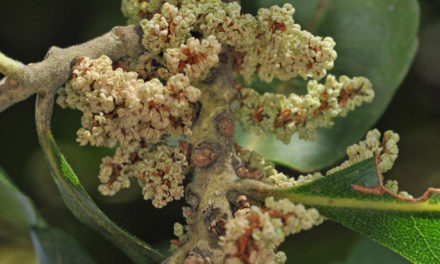General Info – summary
All parts of this plant are poisonous. This spineless Tree with its dark grey, fissured bark has erect branches, and may reach 7m high. Simple, entire Leaves are thick, leathery and nearly opposite. Young leaves are reddish. Petiole upper surface is grooved. Attractive white, bisexual, regular, 5-merous Flowers are long and in cymes. Ovary + 2 carpels & stamens are mucronate. Fruit is a fleshy berry with 1-2 seeds.
Description
Acokanthera oblongifolia
Previous Names: Acokanthera spectabilis, Toxicophlaea spectabilis.
SA Tree No. 638.
Common names: (Afr) Duinegifboom. (Eng) Bushman’s Poison, Dune Poison-bush, Hottentot’s Poison, Poison Bush. (isiXhosa) Intlungunyembe, Inxinebe, Ubuhlungu-benyoka. (isiZulu) Inhlungunyembe, Ubuhlungu-benyoka, Umhlagashiso, Umhlakashiso.
Family: Apocynaceae (Oleander or impala lily: Adenium multiflorum family). This family includes the exotic genera Oleander and Plumeria (Frangipani). Indigenous genera containing trees on this site include Acokanthera, Adenium, Carissa, Rauvolfia and Tabernaemontana. Currently the family has 366 genera and in excess of 5 000 species. In South Africa, there are 90 genera and about 700 species. All have milky or clear sap. The simple, entire and pinnately veined Leaves are usually opposite and may have stipules situated between the petiole and the stem. The Inflorescence is usually a cyme (a broad, more or less flat-topped, determinate flower cluster, with central flowers opening first). The regular and bisexual Flowers are usually bracteate. The Calyx has 4-5, usually free sepals and the 4-5 Petals are joined – at least at the base of the staminal column. A corona (an extension) is often present either on the corolla or arising from the base of the staminal column. The 4-5 Stamens are variously located and have anthers with 2 pollen sacs. The superior to half-inferior Ovary has 2 carpels. Fruit is various. The often-compressed Seeds may have a tuft of silky hair at the micropylar end. The micropyle (a small opening in the surface of an ovule, through which the pollen tube penetrates is often visible as a small pore in the ripe seed. During germination, the seedling’s radicle – embryonic root – emerges through the micropyle).
Name derivation: Acokanthera – Greek: “Acoce” with a sharp, straight point – referring to the pointed anthers. oblongifolia – referring to the oblong leaves. There are 3 species of Acokanthera in South Africa. They are located in woodland from Mossel Bay in the Western Cape, through the Eastern Cape to Kwa-Zulu Natal, Mpumalanga, North West and Limpopo. All species are shrubs or small trees. All have extremely poisonous sap that has been used for arrow poison. All lack spines and leaves are thick and leathery. Inflorescences are located in leaf axils. In Carissa they occur terminally. The plant was first described in 1844.
Conservation: National Status: L C (Least Concern). Assessed: 2018 (L. von Staden).
Tree
This spineless plant is often a shrub, or a small Tree up to 7m (occasionally 15m) high. The trunk with its dark grey, rough and fissured Bark (photo 364) may reach 24cm wide. The few Branches may be ribbed and are often erect and may develop close to the ground. Young branches are green and have large prominent Leaf scars (photo 358). Very poisonous milky latex is present on all parts of this tree (photos 368 – under Flowers & 362 under Leaves).
- 23 2018.08.17 Pretoria NBG. Photo: David Becking.
- 364 2018.10.05 Pretoria NBG. Photo: David Becking.
- 358 2018.10.05 Pretoria NBG. Photo: David Becking.
Leaves
This tree has Leaves that are often in opposite pairs (photo 214 and in 358 above) – but less so than in Acokanthera oppositifolia. Leaves are simple (have a single blade that may have incisions that are not deep enough to divide the leaf into leaflets) and the rolled under Margins are entire (with a continuous margin, not in any way indented). They are 6-12 x 2,5-6cm and may be lanceolate, oval, oblong or elliptic but not round. Leaves are shiny dark green above and slighter lighter and matt-like below (photo 362). The thick leathery leaves lack hairs and form a crown of dark green glossy foliage and young leaves may be tinged with purple or red (photo 214). The plant is evergreen or semi-deciduous. The Apex is notched or rounded and has a hair-like tip (photo 214). It may be mucronate (with an abruptly projecting point) and recurved – photos 214 & 362). Young leaves are reddish (photo 214). The Base is rounded to broadly tapering (photo 362). There is a distinctive Midrib (the main rib of a leaf or leaf-like part, a continuation of the petiole) is visible above and protrudes below. Side Veins tend to loop before reaching the margin. These veins may protrude slightly and are more visible above. The short, thick, yellowish and grooved above Petiole (leaf stalk – photo 362) may reach 1,2cm long. Stipules (basal appendage of the petiole) are absent.
- 214 2019.10.08 Pretoria NBG. Photo: David Becking.
- 362 2018.10.05 Pretoria NBG. Photo: David Becking.
Flowers
Each of the light green axillary groups of Buds is long, slender and initially has overlapping apical petal lobes (photo 366). The white, sweetly scented Flowers may be slightly pink. They are located in the leaf axils of young shoots along the stems (photo 368). Flowers are in Cymes (broad, more or less flat-topped, determinate flower cluster, with central flowers opening first). The 5-merous flowers are bisexual and actinomorphic (regular, symmetrical. Flowers are vertically divisible into similar halves by more than 1 plane passing through the axis). The short, green and free Sepals of the Calyx are ovate to lanceolate (photo 368). The thin sweet scented and reddish Corolla tube is relatively long – up to 2cm (photo 368) and ends in a hairy opening (photo 366). The five white Lobes extend laterally, are up to 7mm long and may be tinged with pink. Towards the lobe apices, the lobes may be turned inwards (photo 366). The 5 epipetalous Stamens are inserted near the top of the corolla tube and alternate with corolla lobes. Anthers are mucronate (having an abruptly projecting point) and do not appear above the opening of the corolla tube. They dehisce longitudinally. The superior Ovary extends into a slender Style that ends with a short Stigma that is minutely bifid. (Aug-Nov+). Flowers are longer and the fruit larger than Acokanthera oppositifolia. (Sep-Nov++).
- 366 2018.10.05 Pretoria NBG. Photo: David Becking
- 368 2018.10.05 Pretoria NBG. Photo: David Becking.
Fruit
The initially green, almost spherical and fleshy Fruit is a 1 or 2 seeded Berry (pulpy, indehiscent fruit like a grape or tomato) that matures to a plumb red, ovoid to nearly spherical shape and finally shrivels to a purplish black (photos 17 & 365). Each berry is hairless, more than 2cm wide and up to up to 2,5cm long. A persistent Calyx is present (photo 17). One or 2 flat oval Seeds are produced. The fruit tends to weigh down the branches and looks attractive but may be poisonous especially the young fruit.
- 17 2018.08.17 Pretoria NBG. Photo David Becking.
- 365 2018.10.05 Pretoria NBG. Photo David Becking.
Distribution & Ecology
Acokanthera oblongifolia is Endemic (restricted to a particular geographic location) in southern Africa. These Trees are found in the Eastern Cape, northern Kwazulu-Natal, Limpopo, Northwest, Swaziland and Mozambique – south of Inhambane. In the shade, the plants become straggly. They usually occur close to the sea in coastal thickets where they can withstand salty spray. Trees also occur in dry forests. These drought resistant, hardy plants grow well in semi-shade up to an altitude of 2 300m. They may appear together with Erythrina caffra. Both the Speckled Mousebird and the Knysna Turaco consume the fruit without any adverse effects. The ripe fruit may be less toxic.
Ethnobotany
All parts of this plant are poisonous – especially young fruits. Arrow poison has been made from the sap. It is probably not suitable for gardens – especially where pets and children are present. The poison has a digitalis like action and contains cardiac glycosides that effects the heart. Seed extracts produce convulsions and death, and bark extracts produce paralysis. Be careful collecting unknown firewood where the plant may grow. The milky sap is very poisonous. When handling this specimen use latex gloves. Local medicine makes use of this plant.
References
Boon, R. 2010. Pooley’s Trees of eastern South Africa. Flora and Fauna Publications Trust, Durban.
Burrows, J.E., Burrows, S.M., Lotter, M.C. & Schmidt, E. 2018. Trees and Shrubs Mozambique. Publishing Print Matters (Pty) Ltd. Noordhoek, Cape Town.
Coates Palgrave, M. 2002. Keith Coates Palgrave Trees of Southern Africa, edn 3. Struik, Cape Town.
Lawrence, G. H. M, 1951. Taxonomy of Vascular Plants. The Macmillan Company, New York. Tenth Printing 1965.
Palmer, E. & Pitman, N. 1972. Trees of southern Africa. Balkema, Amsterdam, Cape Town.
van Wyk, B. & van Wyk, P. 1997. Field guide to Trees of Southern Africa. Struik, Cape Town.
von Staden, L. 2018. Acokanthera oblongifolia (Hochst.) Codd. National Assessment: Red List of South African Plants version 2020.1. Accessed on 2022/12/01.
https://en.wikipedia.org/wiki/Acokanthera_oblongifolia
http://plantinfo.co.za/plant/acokanthera-oblongifolia/
https://www.prota4u.org/database/protav8.asp?g=pe&p=Acokanthera+oblongifolia+(Hochst.)+Codd
http://pza.sanbi.org/acokanthera-oblongifolia
http://posa.sanbi.org/flora/browse.php?src=SP

